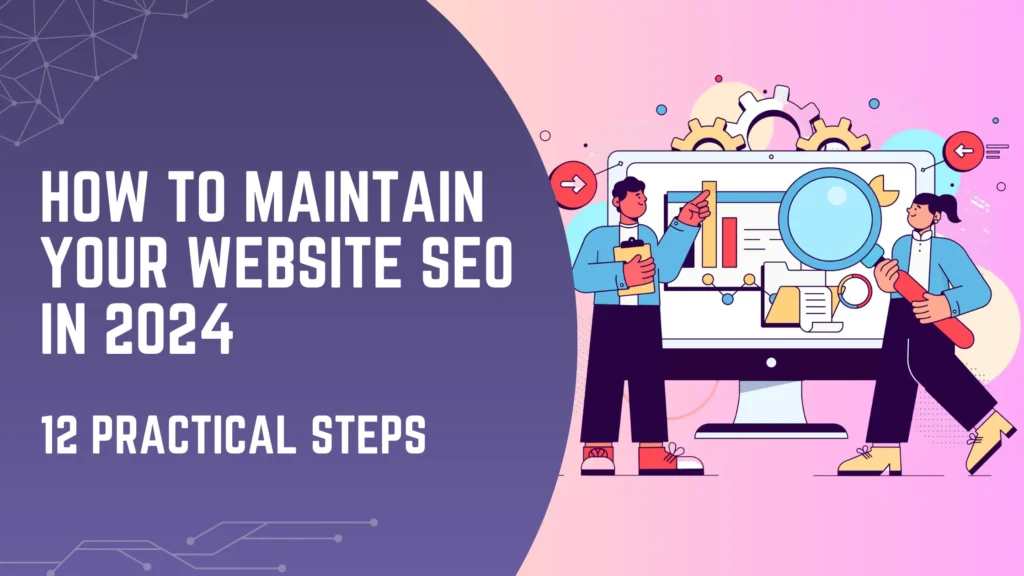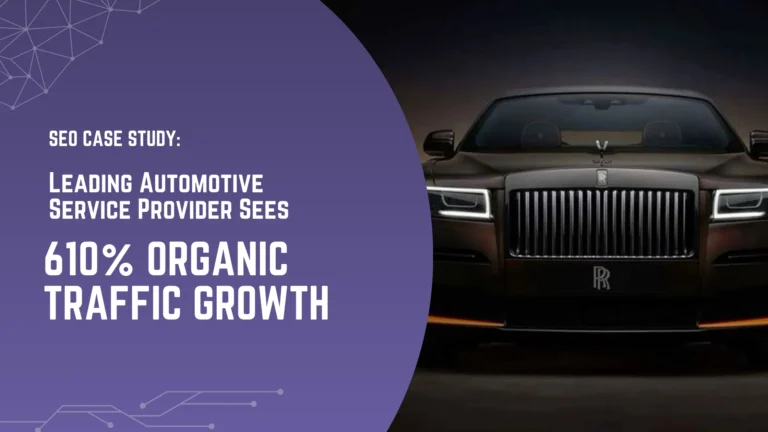Keeping your website ranking high in search results can feel like chasing a moving target.
New algorithms updates, user trends, and technical tweaks constantly emerge, making it tough to stay ahead of the curve. Think of it like this, you are working on a website day and night to get it to rank higher. And someday it does and your hard work finally pays off.
Now what?
You cannot just leave it there as one way or the other someone will replace your position. If not then some new update from google might affect the website.
The answer to this is taking an agile and flexible approach to make the SEO maintenance of your website streamlined. Helping you to always stay ahead of the curve.
So let’s get on with the top 13 best tactics to keep a website always fresh with updated content and retain that ranking irrespective of any algo update or competition
1. Remove the Last Duplicate Content on Your Website
Duplicate content on your website can massively confuse the search engines on which version of a page to rank when there are multiple of them with almost the same content. And this ends up hurting the ranking potential of the page.
According to SEMRush Study more than 50% of the websites face duplicate content issues. So you are definitely not alone in this. But before you start addressing this issue for your website, you have to figure out why it is happening in the first place. Most of the time this issue happens unknowingly and in order to fix it you must know the reason. Once you do that,
Here are some quick ways to fix this issue –
I. Duplicate content issues can be solved manually. Hence if you locate any such on your website, then you can just consolidate the whole content of the two pages into one. While doing so make sure that you keep the URL that ranks better among the two and gets more visibility and traffic.
II. You can also use rel=canonical tags, to specify the preferred version of a page to search engines.
III. 301 redirects are another option for unwanted duplicates, sending visitors to the main page.(this will also help you to execute the 1st point, as you have to put a 301 on the non-selected URL)
IV. While robots.txt isn’t the main solution, it can be used strategically to block low-value duplicates from search engine crawling, preventing them from competing with your important content.
Note: Remember, robots.txt doesn’t block indexing entirely, so use noindex tags instead.
2. Make the Resources of your Website Visible to Google
Your website is made up of more than just HTML text. Resources like images, CSS & JS files are important to make your website function properly. Make sure that the important pages on your website are not blocked by any robot.txt rule and are discoverable to anonymous users.
This will help google to show the actual page the way you want it to show. If a page is inaccessible to search engines, other pages linking to it may display broken content or errors. This can hurt your site’s reputation and hinder search engine crawling.
3. Make use of robot.txt wisely
Use robots.txt to prevent search engines from crawling content you don’t want indexed, like duplicate pages or unimportant resources. But make sure to use sitemaps to guide search engines towards the content you do want crawled and indexed.
Robot.txt files act as a guide to google crawlers and help them identify which pages on a website are allowed to crawl. If you block an URL in robot.txt then google will not be able to view the content of the page, but still might index it. Avoid using robots.txt to block indexing – instead, use the noindex tag for that purpose.
4. Maintain your Sitemap
Sitemaps are used to tell Google which pages on your website are most important. They provide details like how often content is updated, and help Google find and prioritize crawling non-text content like images and videos, which is especially valuable for sites with frequently changing content or hard-to-discover pages.
5. Help Google Understand your Website
It is always better to use text instead of graphics to convey key information on your website. While Google can handle various file types, plain text is the most reliable way to help Google understand the content of your pages. If you do use non-text elements, consider adding structured data to provide additional context.
6. Give the Best User Experience
At the end of the day, providing an excellent user experience should be your number one goal. Why? Because Google heavily favors websites that deliver a top-notch experience to visitors. After all, happy users equal happy search engines!
So, how can you ensure your website offers a delightful experience? Here are two crucial tips:
a. Make Security a Top Priority
Imagine you’re browsing a website, and suddenly, your browser flashes a scary warning about the site being “Not Secure.” That’s an instant turn-off for most users. To avoid this nightmare scenario, always use HTTPS instead of plain old HTTP.
b. Speed Things Up
Nobody likes a slow website. It’s frustrating, inconvenient, and can quickly send users running for the exits. That’s why you need to keep your site lightning-fast. Use Google’s Page Speed Insights tool to analyze your website’s performance and get specific recommendations on how to improve load times.
Slow site speed can also harm your SEO as it increases page bounce rate. If your website pages are not loading within 0-2 seconds then your website needs some seo maintenance to do. Check the bounce rate metric from google analytics and identify pages which are loading slow.
7. Take Control of your Search Appearance
Ranking high in Google isn’t just about being at the top of the results page. You also want your listing to really stand out and grab people’s attention. Google has all sorts of features like star ratings, event snippets, and rich visuals that can make your search result look extra enticing.
The key is to take advantage of these features and make sure your website is providing all the right information for Google to work its magic.
8. Update Low-Performing Content
Regularly review your website’s analytics to identify underperforming pages or content. These could be pages with high bounce rates, low engagement, or poor rankings.
Instead of letting them drag down your overall SEO, update or repurpose this content to better align with user intent and target keywords. Refreshing old content can breathe new life into your website and improve its ranking potential.
9. Give Users what they want by Aligning Search Intent
Imagine you’re hungry and search for “best pizza near me.” You click on a result promising amazing pizza, but it turns out to be an article about the history of pizza.
Total letdown, right?
That’s why matching your content to the true intent behind those keywords is so important.
When people type a query into Google, they have a specific goal or question in mind. Maybe they want to buy something, learn how to do something, or just find a quick fact. Your job is to make sure your website delivers exactly what they’re looking for.
So before creating any new content, do a little digging into those keywords. What are people actually trying to accomplish with that search? Once you understand the intent, you can craft content that’s relevant, helpful, and satisfying – like serving up a hot pizza after that “near me” search.
10. Keep High-Performing Pages Fresh and updated
Every website has those superstar pages – the real traffic magnets that are pulling in tons of views and performing extremely well. These are the pages you want to pay special attention to and keep fresh.
As great as they are, you can’t just let that content go stale and outdated. Those pages need some TLC to maintain their superstar status.
Just like an athlete has to keep training to stay at the top of their game, your best-performing pages need to be updated regularly with fresh, relevant content. Think of it as giving those pages a tune-up.By adding new information and articles to those popular pages, you’re doing two key things.
First, you’re keeping the content accurate and valuable for users, which they’ll appreciate. But you’re also signaling to Google that this is a page with actively maintained content.
Second, constantly refreshing the content gives people a reason to keep coming back and engaging with the page even more. This would also make the page more shareable and linkable. Which brings us to our next point.
11. Create Content that’s Worth Sharing and Linking
The trick here is to create content that’s so valuable and interesting, other sites can’t help but link to it. I’m talking about the kind of stuff people love sharing with their friends and colleagues.
What does this look like? Think in-depth guides that become go-to resources in your industry. Or original research studies with unique data and insights. Maybe even interactive tools or calculators that solve a specific problem. The key is developing something truly high-quality that provides exceptional value.
Once you nail that, other reputable websites will naturally want to link to your fabulous content. Google sees those links as votes of confidence, which can gradually lift your rankings higher.
It’s a long-term strategy, sure, but putting in the work to create those linkable asset pieces pays off big time. It’s always a win-win.
12. Fix Broken Links(internal + external)
Nobody likes clicking on a link only to be met with a big ugly “404 Error” page. It’s frustrating for users and can really kill the vibe on an otherwise awesome website. But broken links don’t just ruin the experience for visitors – they also create issues for search engines trying to crawl and understand your site’s content.
That’s why doing regular broken link audits should be on your website’s SEO maintenance to-do list. You’ll want to run down both your internal links (between your own pages) and external links (to other sites) to catch any links that are not showing what it is supposed to.
Once you’ve identified these bad links, you’ve got a couple options. Either update those links to point to a working page or ditch ’em entirely if they’re not crucial. You can also make use of redirects to fix the issue.
Final Thoughts
Maintaining your website’s SEO in 2024 is all about staying adaptable to the latest best practices and ever evolving trends. However, by prioritizing user experience, keeping content fresh and aligned with search intent you can make your website always stay ahead of the curve.
SEO is an ongoing journey. Embrace the processes, follow the best practices, and watch your website thrive in the search results and become more discoverable to your users.










